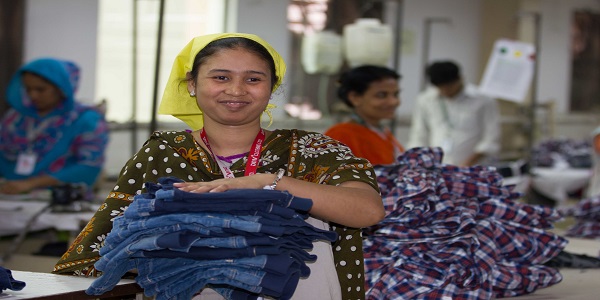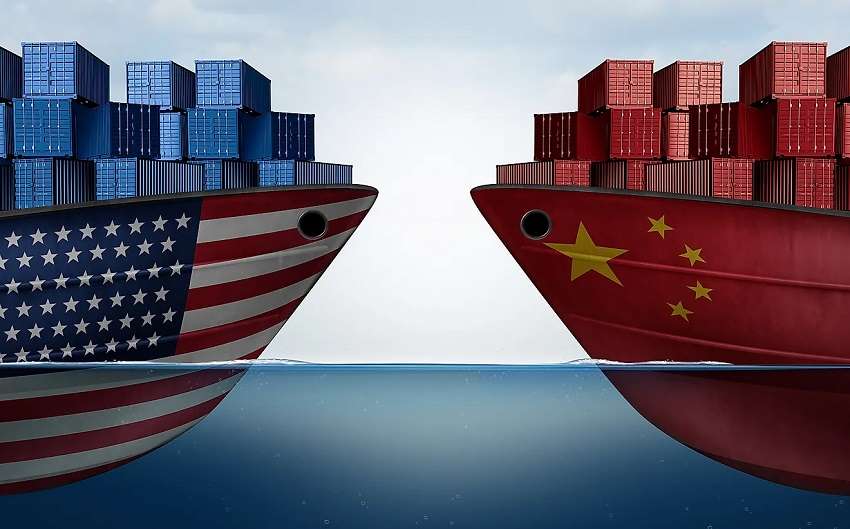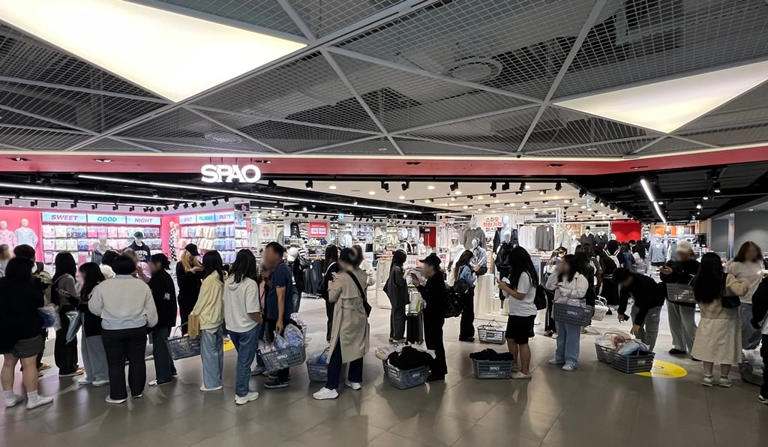FW
At ITMA Milan, Spanish company, Jeanologia, specialist in sustainable technologies for garment finishing, is set to make an exclusive presentation. It will be presenting the Zero Discharge Production Center, the first Jeans finishing plant that guarantees zero contamination. This technology eliminates the need for water treatment and also the use of Pumice stone as it recycles 100 per cent of the water used.
For the first time ever, a denim treatment plant will achieve zero waste, all because of the efficient combination of Jeanologia’s three technologies, the light of the laser, wet and dry Ozone G2, and the nano bubbles of the reactor eFlow. Thus, the Zero Discharge Production Center will revolutionise the textile industry.
Jeanologia is able to present the first ever Jeans finishing plant that recycles water and avoids any use of pumice stone, optimising the complete process yet with zero concessions on the ‘final look’ after 20 years of research and development of technological solutions for the industry. The combination of the company’s laser, G2, and eFlow technologies reduces water consumption by 90 per cent, the use of chemicals by 90 per cent and energy consumption by 50 per cent.
With ZERO, Jeanologia is making advances in the optimisation of production processes, in the reduction of waiting times, and in the adaptation to large and smaller scale production. The company’s innovations have already made it a leader in sustainable and efficient solutions for the garment finishing sector.
The third denim expo will be held in Bangladesh from November 11 to 12. The theme this time is sustainable denim. The aim is to promote Bangladesh’s brands to the global market and share knowledge with international producers to get acquainted with the latest technologies. The primary purpose is to create a platform for denim stakeholders and to make Bangladesh a one stop sourcing platform for the denim industry.
The two-day event will feature a trend zone displaying new and future denim trends. In addition, there will be a unique range of seminars and a panel discussion to provide insights into topical issues of the industry.
In all, 41 companies are participating in the expo, an increase from 25 participants from the previous expo. Among them, 27 are international companies from China, India, Pakistan, US, Turkey, Korea, Japan, Thailand, Singapore and Germany. Bangladesh is currently the second largest denim exporter to Europe, after China and the third largest to the US, after China and Mexico. In addition to shipping to the US and Europe, Bangladeshi denim producers have found markets in countries like China, India, Malaysia, Thailand, Japan and Russia.
Denim exports from Bangladesh could reach $7 dollars by 2021, up from the current $3.5 billion, giving a huge boost to the country’s overall export earnings.
www.bangladeshdenimexpo.com/
Bombay Dyeing and Manufacturing has said that its loss widened to Rs 65.64 crores for the quarter ended September 30, 2015, against that of Rs 34.43 crores in the same period of previous fiscal.
Total income from operations, on a standalone basis, fell by 20.26 per cent to Rs 438.99 crores as against Rs 550.54 crores in the April-June quarter of previous fiscal. The operations of the company's textile unit at Ranjangaon, Maharashtra have been temporarily suspended from June 1, 2015 in view of the proposed sale of the unit.
Bombay Dyeing had agreed to sell the textiles processing unit to Oasis Procon for Rs 230 crores in May 2015. The company also decided not to engage in the business of export of bed linen or bed linen fabric to the US for five years from the closing date as per the terms of the deal. The deal is part of the company’s plan to raise funds to repay existing loans, enhance working capital, and for other general business purposes.
Now, for the sale of this unit, Bombay Dyeing will negotiate with other potential buyers and seek the approval from its shareholders at the appropriate time. However, this won’t impact the company’s existing retail business Home & You.
www.bombaydyeing.com
Nandan Denim net profit increased 30.54 per cent at Rs 15.60 crores for the second quarter ended September 30, 2015. The company had reported a net profit of Rs 11.95 crores for the July-September quarter of last fiscal.
Nandan Denim's total income from operation during the quarter under review was up 6.35 per cent to Rs 294.53 crores as against Rs 276.94 crores for the same period last fiscal.
The company has also implemented a Rs 612 crores expansion plan which would take its capacity to 110 million meters a year. A lot of investment is being done, not only on hardware, but on software, market research, understanding and delivering fashion.
Nandan Denim is part of the Rs 3,000-crores Ahmedabad-based Chiripal Group. It markets 85 per cent of its denim fabrics for the Indian market, with the balance being exported to several countries. Going ahead, the company wants to hike its share of exports to 25 to 30 per cent of overall production.
www.nandandenim.com
Safexpress, India’s largest supply chain and logistics firm has opened its first service centre in New Delhi. Located at Dwarka area in the capital, the Safexpress service centre will cater to the C2C and B2B needs of the region.
On October 23, 2015, the service centre was inaugurated by Rubal Jain, MD, Safexpress in the presence of Pawan Jain, Founder and Chairman, Safexpress, alongside various senior officials from the company.
Speaking on this occasion, Rubal Jain said, “Safexpress has been growing at a reasonably good rate for the last few years. As a growing firm, we have always felt the need for continuous innovation. It is this quest for innovation which has led us to create innovative retail services like Easy2Move, Campus2Home, and so on. To help the consumers avail of such unique services right in their neighbourhood, we have launched the Safexpress service centre.
” “These service centres complement an already-existing extensive partner network of Safexpress and will help us penetrate the market better. They will be equipped with packing material at all times, and will facilitate order booking for door pickup of goods through Tata Ace vehicles. Also, any sort of enquiries regarding Safexpress and its complete range of services can be made here. The centers will help us create strong brand visibility while enabling us to serve lots of new consumers,” he added.
www.safexpress.com
The Cotton Corporation of India (CCI) is yet to start procurement operations. It says, the volatility in prices is one of the main reasons behind its reluctance to go ahead with purchases. The CCI is waiting for cotton prices to come down since private traders are offering a higher price than the stipulated minimum support price. Farmers are presently getting up to Rs 4,500 per quintal from private traders, while the minimum support price for cotton is Rs 4,100. Therefore, the CCI is waiting for market prices to come down.
CCI feels farmers are not facing any losses even if they didn’t start procurement as private traders are already purchasing cotton brought to the markets. There has been extensive damage to the cotton crop in Punjab because of the severe whitefly attack. This has caused staggering losses. Due to the whitefly attack, the cotton production may go down by 40 per cent this year.
As against around 13 lakh bales production last season, CCI is expecting around 7.50 lakh bales this time. Punjab has appealed to the textile ministry to relax the norms for cotton procurement in the wake of the extensive damage to the cotton crop.
For the second quarter net profit of Lakshmi Machine Works rose 20.58 per cent and net sales rose 6.88 per cent. The mid-cap company has an equity capital of Rs 11.27 crores.
Tamil Naud-based Lakshmi Machine Works was founded in 1962 with the aim of providing Indian textile mills with the latest spinning technology. It caters to the domestic market and exports to Asia-Pacific region. It has a 60 per cent market share in the domestic textile spinning machinery industry. It is a global player and one among the three manufacturers of the entire range of textile spinning machinery from blow room to ring spinning including machine tools.
The company has diversified into CNC machine tools and is a brand leader in manufacturing customised products. The foundry makes precision castings for industries the world over. Lakshmi has added an advanced technology center to produce components for the aerospace industry. The company also has a wind energy division.
A subsidiary company manufactures textile spinning machinery, spares and components.
www.lakshmimach.com/
Textile Commissioner Kavita Gupta has asked exporters to tap the enormous potential in technical textiles as demand is increasing across the world. She also emphasised on the need to reduce excise duty on man-made fibres (MMF) from 12 per cent to 6 per cent.
Gupta, made the recommendations based on discussions with various export promotion councils and traders’ bodies. Yarns made of MMF like polyester and synthetic are in demand, points out Gupta. At a meeting with Tirupur Exporters' Association in Tirupur Gupta said the revenue of the garment sector would increase manifold, if garment manufacturers from Tirupur, whose exports have crossed Rs 20,000 crores, enter the technical textile space.
She further stated that the government has adequate funds to promote innovative products. Besides, Gupta urged industrialists to come forward and use the funds to develop newer products.
Nguyen Tien Vy, Director of the Ministry of Industry and Trade's Planning Department has said that the textile output in Vietnam last month reached 32 million sq. mtr., posting an 8 per cent year-on-year increase. In the first 10 months of the year, the output of natural fabric was estimated at 259 million sq. mtr., increasing 1.9 per cent over the same period last year while that of synthetic fabrics was 547 million sq. mtr., reducing 5.6 per cent from the corresponding period last year.
The export turnover of garments and textiles last month was $2.2 billion, representing a 13.6 per cent rise from the same period last year. The turnover from January to October posted a 10.4 per cent year-on-year increase to 20 per cent. Vy said the ministry has asked relevant agencies to take measures to resolve difficulties being faced by the businesses in the sector while exploring new markets, partners and orders. In addition, it has implemented measures to improve the business environment.
However, he said Vietnam would find it hard to achieve this year's export growth target of 10 per cent due to the decreasing prices of several export products. Its trade deficit through the end of October this year increased to $4.1 billion from $3.9 billion in the first nine months. During the first 10 months, the total export value gained a year-on-year surge of 8.5 per cent to $134.6 billion, while the total import value had a year-on-year increase of 14.3 per cent to $138.7 billion.
“The country should strive to reach the export turnover of $15.2 billion each in the last two months of the year as total turnover in the 10-month period was only $134.6 billion or 82 per cent of the whole year's target," he added.
www.moit.gov.vn

A recent World Bank study states, if the RMG industry in Bangladesh is able to capture 20 per cent of China's apparel export attrition, the former’s export volume will increase by around $29 billion, creating 5.4 million new jobs and 13.5 indirect employment. In fact, the apparel summit, organised by Bangladesh Garment Manufacturing and Exporters Association (BGMEA) and other stakeholders last year targeted exports worth $50 billion per annum by the year 2021, however, there are several challenges the industry needs to still overcome.
Step needed to push up growth

With serious signals coming from international quarters, the government of Bangladesh and domestic private sector will have to seriously look into issues impacting RMG industry's growth. Experts point out that the government of Bangladesh should implement an effective policy for fulfilling the requirements of international buyers, the conditions of US Trade Representative (USTR), the standards of International Labour Organisation (ILO) and any of its subsidiaries, the requirements set by the bilateral and multilateral donors, and conditions imposed by importing nations in the alternate markets - such as, EU, Japan, Australia, and India.
The country also needs to look into impending challenges such as the withdrawal of the Generalised System of Preferences (GSP) from the US, the chances of EU following the steps of USTR, the signing of the Trans Pacific Partnership (TPP) between the US and Vietnam and other East Asian countries, and no alternative markets for Bangladeshi exports due to the intra-bloc trading of the TPP member countries.
A recent report published by Sourcing Journal indicates that the US apparel imports from Vietnam grew by at least 15 per cent year on year totalling $5.95 billion occupying the place next to China. Bangladesh squeezed past Indonesia to take the third place with a dollar value of exports of $3.1 billion accounting for 6.7 per cent of the apparel imported into the US growing annually at 8.5 in value. Exports to the US from Bangladesh fell by at least 37 per cent since the factory disaster in 2013 from $4.94 billion losing about $1.84 billion of business as of July 2015.
Strong steps need of hour
The Bangladesh government needs to work towards fulfilling the conditions for restoring GSP status from the United States, which may assist in improving the dismal outlook of apparel exports. The government can also establish a committee under the Prime Minister's Office to oversee the activities of private and public sector and the international NGOs responsible for delivery of outputs in terms of workers’ safety, working environment, representation of workers, and solve pending legal issues. Also special economic zones (SEZs) for the apparel-textile export industry may also result in improving exports.
As per estimates, export of readymade garments from Bangladesh peaked above $25.5 billion in 2015 accounting for nearly 82 per cent of the country's total exports. At present, there are 4,296 factories and about 4 million workers in the readymade garment industry. An estimated 10 million people are employed in the support and services sectors. These numbers are expected to double with the projected doubling of exports to the $50 billion target by 2021 provided the country and the industry stakeholders take immediate actions to tackle the concerns shadowing its growth momentum.
www.bgmea.com.bd











